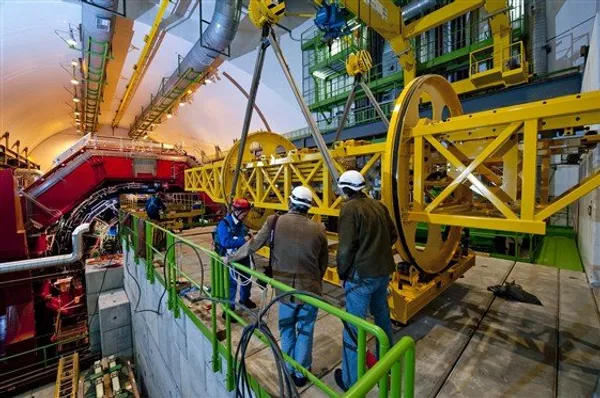Physicists conducting experiments on the world's largest atom smasher have successfully recreated conditions that existed in the first instants of the Universe's existence by smashing together lead ions, CERN said in a statement on Monday.
Proton running for 2010 in the Large Hadron Collider at the European Organization for Nuclear Research (CERN) in Switzerland came to a successful conclusion last Thursday, and experiments entered a new phase, which will continue for the next four weeks.
By conducting the current ALICE experiment, which is optimized to study lead-ion collisions at the LHC, scientists are hoping to shed further light on the properties of the "strong force," which binds the quarks into bigger objects, such as protons and neutrons.
According to CERN officials, the experiment created temperatures a million times hotter than the centre of the Sun on November 7, allowing the scientists to study the so-called "quark and gluon soup" — the state of matter that is believed to have existed at the birth of our Universe.
"Heavy-ion collisions provide a unique micro-laboratory for studying very hot, dense matter," Jurgen Schukraft, spokesperson for the ALICE experiment, earlier said.
The collider, located 100 meters under the French-Swiss border with a circumference of 27 km, enables scientists to shoot subatomic particles round an accelerator ring at almost the speed of light, channeled by powerful fields produced by superconducting magnets.
The $5.6 billion international LHC project has involved more than 2,000 physicists from hundreds of universities and laboratories in 34 countries since 1984.
MOSCOW, November 9 (RIA Novosti)




